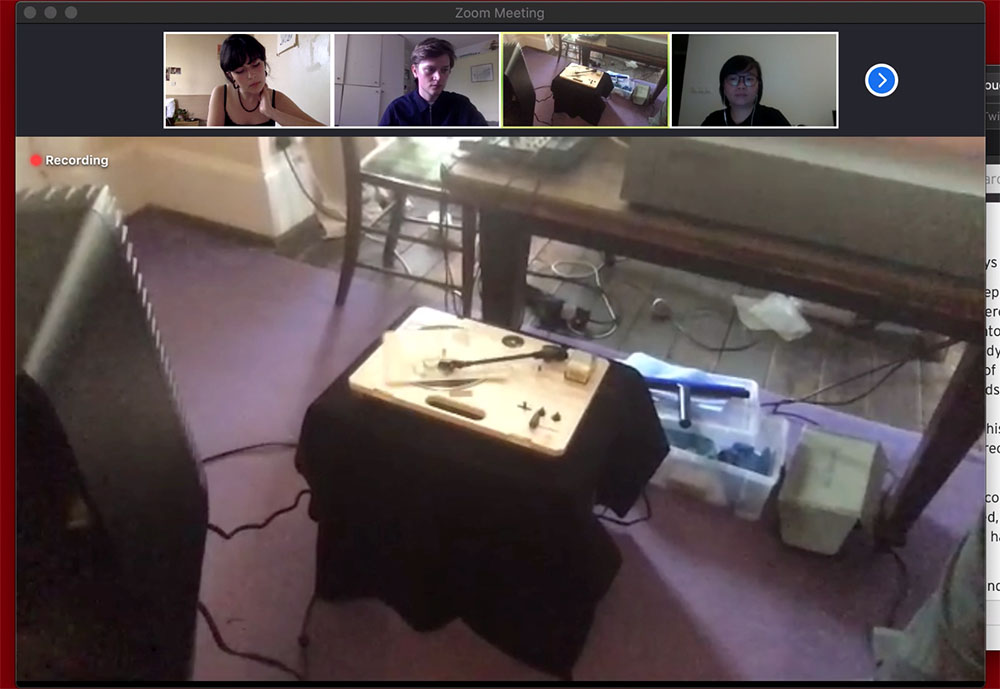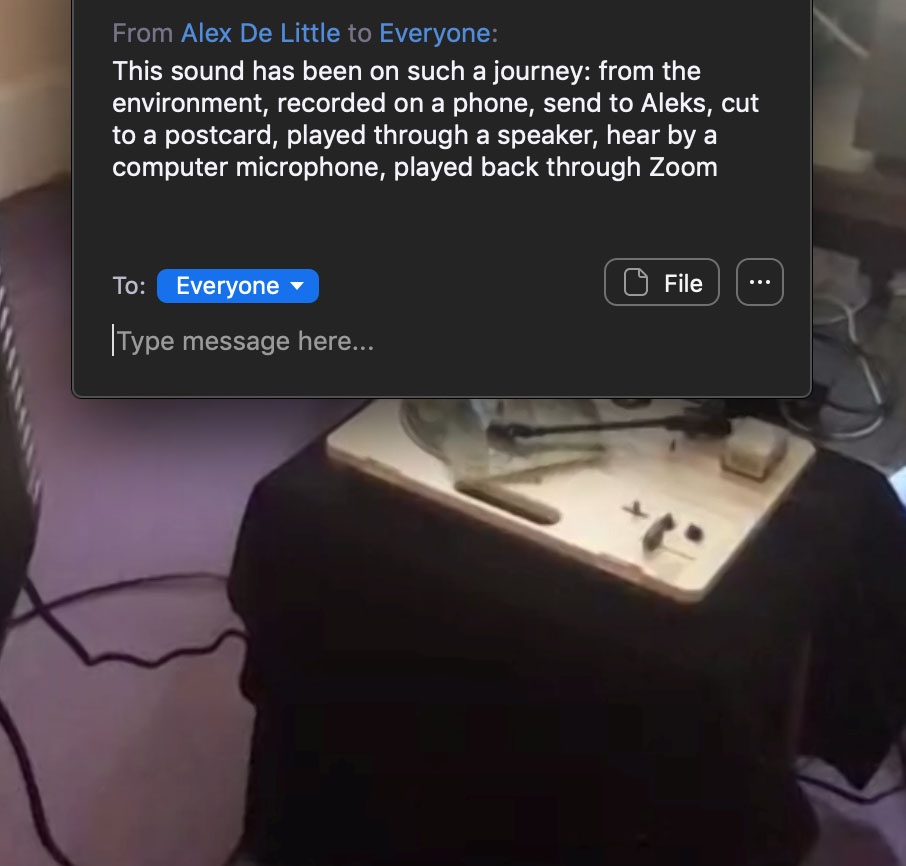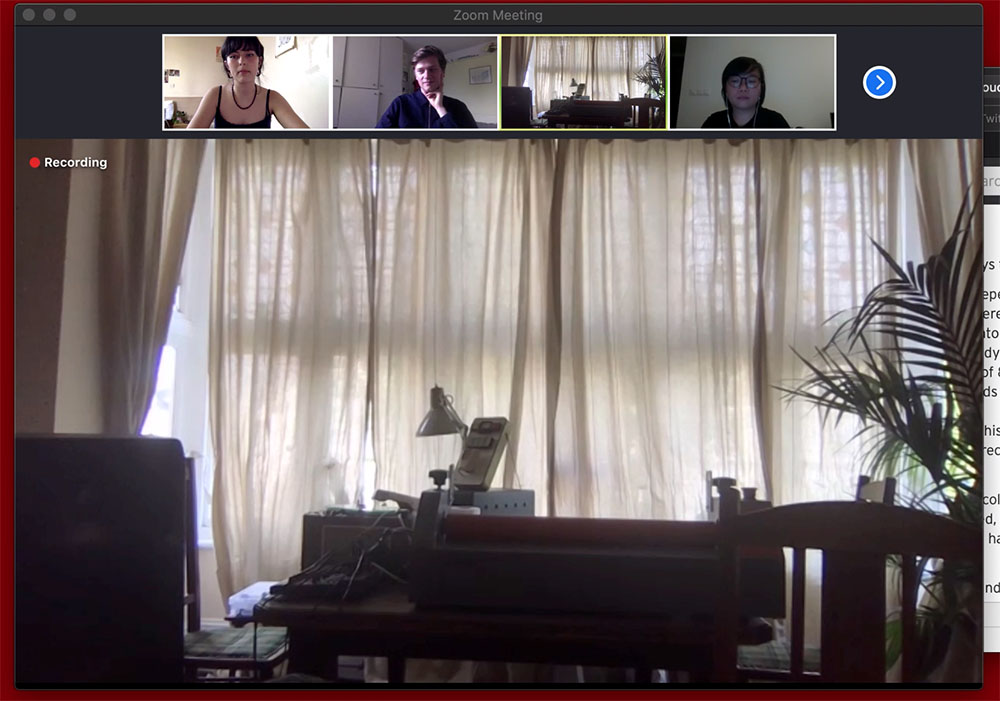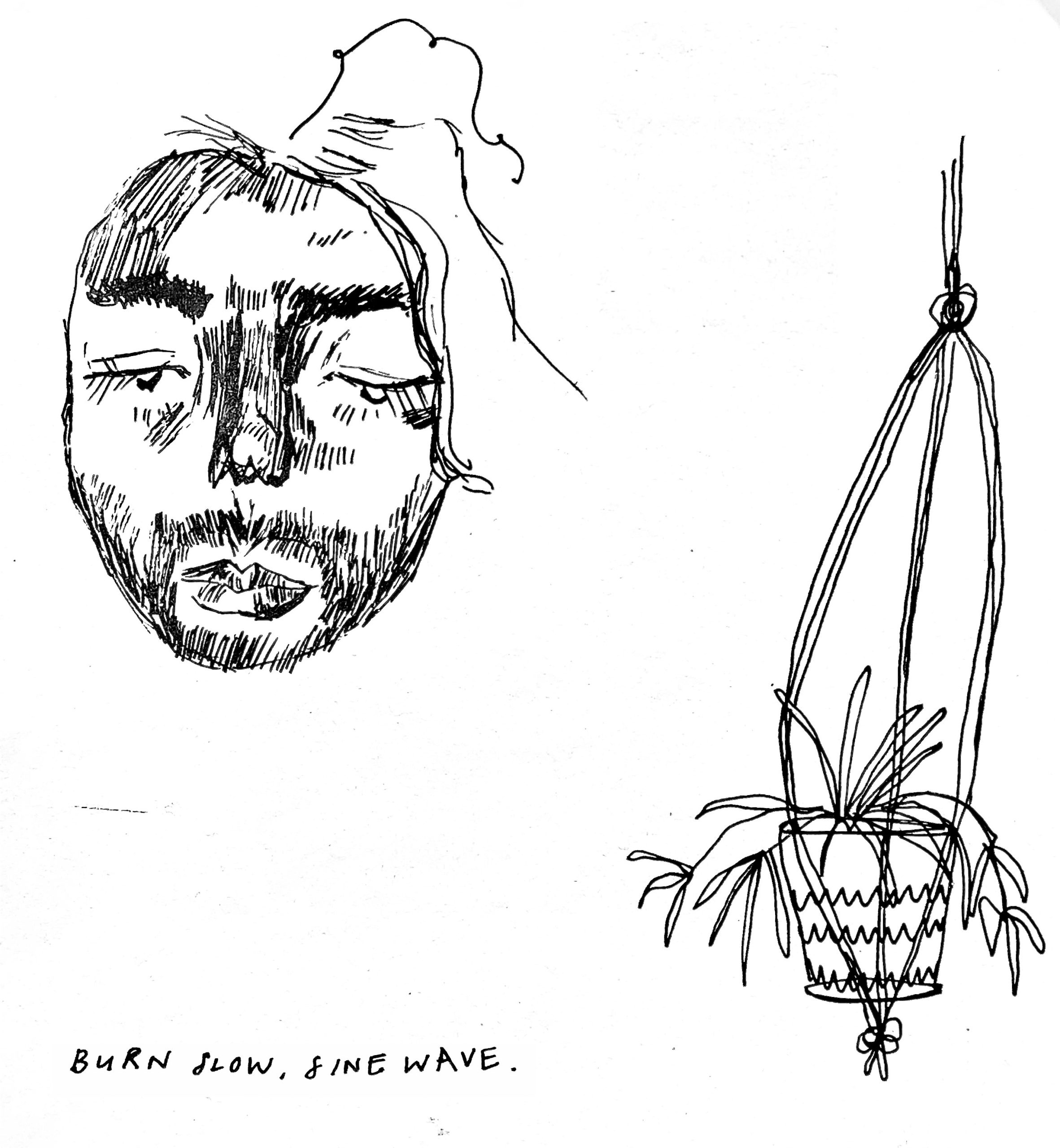to hold the sounds I hear I must place my ear to the ground, to percussive prongs, to the flickering beat of a flame –
Everyone today finds themselves in their own site-specific sound environment—we are becoming accustomed to our daily sounds in this year’s lockdown. What is perhaps so exciting about the Sound Postcards project with the National Science and Media Museum is that, through aurally mapping individual spaces for others, each postcard presents new experiences of isolation. No longer isolated in our listening, we are witnessing multiple geographies and identities, our movement guided by our ears.

Sound acts to archive the narrative of the time, documenting shared feelings. When words are spoken they convey fracture, loss, joy; all translated in an utterance. There is a notion of ghostly voices—through the raw capture of the recording, audio exists beyond a tangible body or object, sound becoming a spiritual presence that continues to exist for as long as the audio remains listenable.

Through my work with the sound postcards I was drawn to the notion of sound carrying a narrative that, while the physical record remains located in one place as it plays, the content of the sound has traversed. The fluxus of a city, of a nation, of an entire life, is contained and transmitted across a plethora of waves. It’s like a dream, founded in one mind but relayed for many.

Dreams equate with how isolation has shrouded my daily life, an obscured panoptical retelling of daily life. Translating my experience first into written language and then composing spoken language with audio produced during the first month of isolation has enabled me to digest, layer and shift narratives, the result a sonic message marking this oddity in time.
My recorded piece burn slow, sine wave is a love letter of sorts: expressing gratitude that my life continues to move day to day—the repetition of familiar sounds audible—as well as confessing love for the music and the people I reside with, the tenderness of loved ones holding each other up. This is the song of morning, of dawn’s birdsong and the audible scrubbing, washing and cooking of dishes for a house as it wakes.
The vocals are taken from a short poem I wrote during the time I gathered field recordings; the drawings created in this period too. The simple language mirrors the minimalist imagery, each evoking a now quieter, secluded life with few people and precious belongings. My voice relays the lull that lives with us now, acceptance of this slow time.

